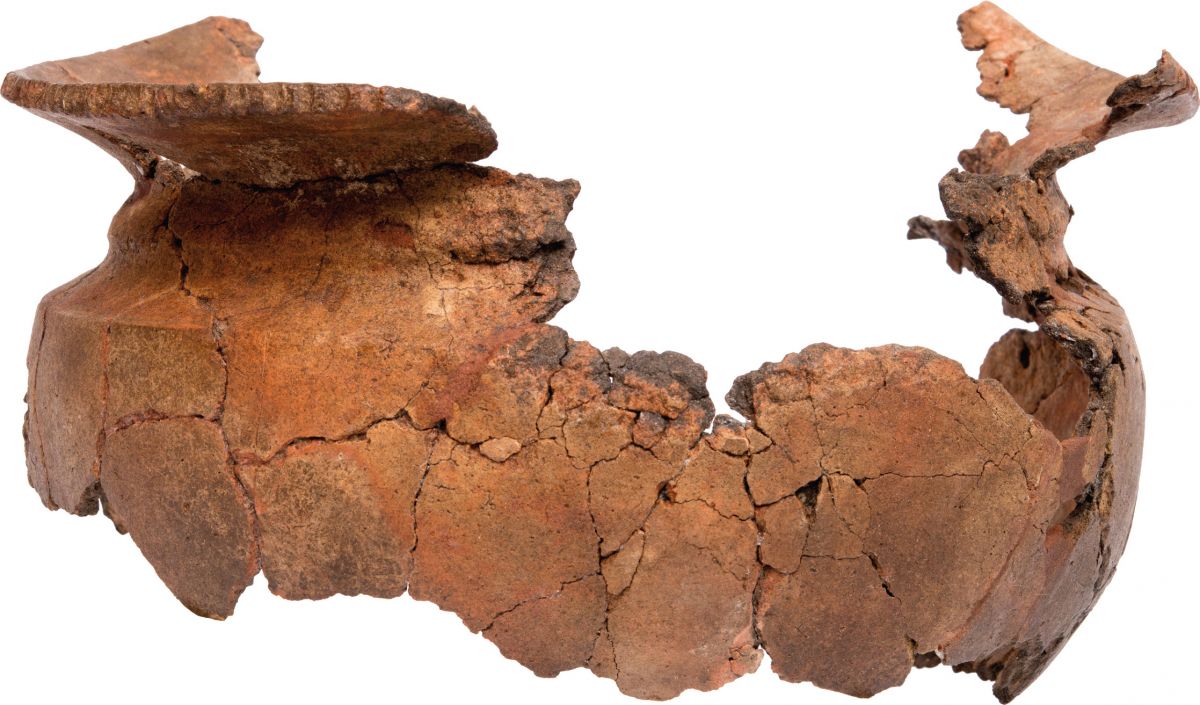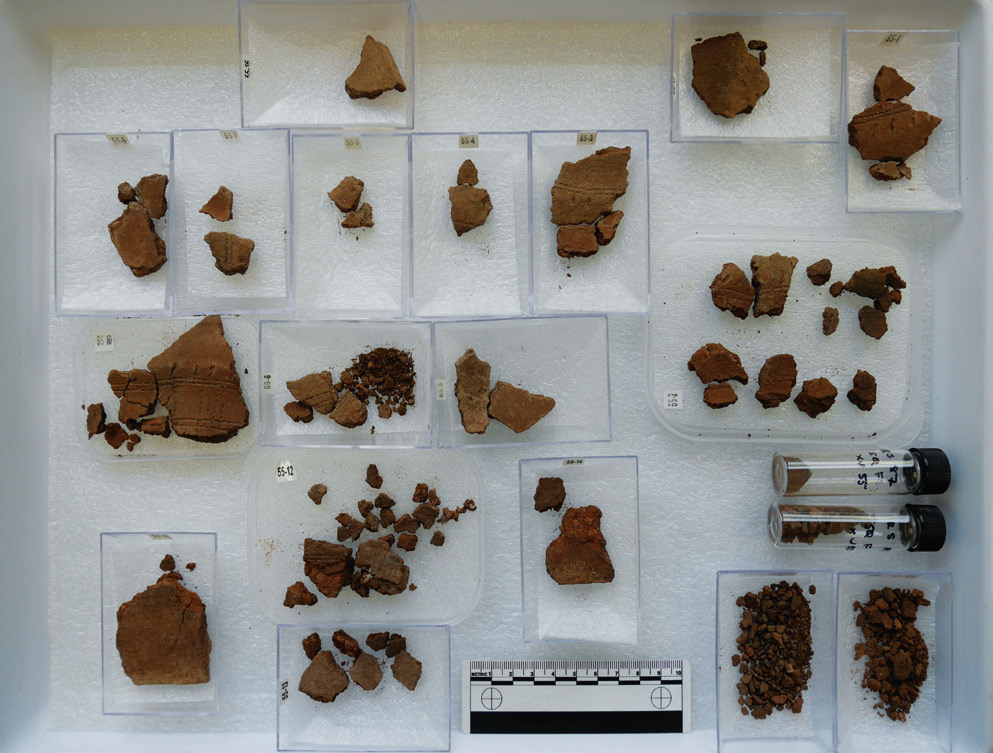Why does the conservation of low-fired Caution Bay Lapita pottery matter?
<p>In 2009-2010 Monash University (Australia) undertook a large archaeological survey and excavation program at Caution Bay, on the south coast of Papua New Guinea (PNG) revealing readily identifiable dentate stamped Lapita ceramics from 2900 years ago.[qtip:1|David, B. et al. 2011. ‘Lapita site in the Central Province of mainland Papua New Guinea’, <em>World Archaeology</em> 43(4):576-593.] In late 2010 I was asked to conserve two recently excavated highly fragmented very low-fired Lapita vessels from Caution Bay. Both vessels were presented concealed in plaster jackets that had been used to encase, support, lift and transport the fragile fragmented pots from the excavation trench in PNG to Melbourne.[qtip:2|Jones-Amin, H. 2014. ‘Conservation of low fired Caution Bay archaeological ceramics’, ICOM-CC 17th Triennial Meeting/Conference Preprints, Melbourne, 15-19 September 2014; International Council of Museums Committee for Conservation.] Prior to treatment commencing, research revealed that there was scarce literature on the conservation of low-fired archaeological ceramics; the literature that was found was in agreement that low-fired ceramics are difficult to conserve and lift in the field and often do not make it to the laboratory. At this time, I had been working as a conservator for 15 years in the laboratory and in the field on archaeological excavations. I had seen, handled and conserved countless artefacts. The complex deterioration challenges and significant conservation issues presented by these vessels was new.</p>
Pottery remains one of the most abundant and enduring materials found on archaeological sites. The limited durability of low-fired archaeological pottery means that it is largely overlooked and rarely identified. This durability issue obscures the archaeological record creating misleading histories and knowledge of past people. Furthermore, poor endurance has meant that low-fired pottery has not been conserved, creating a knowledge gap for research that informs archaeologists, conservators and source communities. I felt that I could contribute to bridging this gap by undertaking a PhD that conserves and analyses the Caution Bay ceramics.
Lapita pottery-making and pottery-carrying colonisers of the western Pacific are famed for their expansive travels across 4500km of seascape from the Bismarks to Samoa approximately 3400 and 2900 years ago. For over 40 years the lack of material evidence resulted in researchers positing that the colonisers of the western Pacific never made it to the south coast of PNG even though Lapita peoples were known for their extensive sea travel. The discovery of Lapita pottery by Monash University was unexpected and contrasted with the written record. The discovery revised the archaeological narrative of Lapita people and a new story began to be told that connects across Melanesia. My research and conservation of Caution Bay ceramics brings increased understanding of the materiality of archaeological material in Australasia, interdisciplinary collaboration with archaeologists and demonstrates how early conservation intervention can increase the understanding and survival of low-fired pottery all over the world.
Lapita pottery (c. 2900-2550 cal BP) from Caution Bay was fired in open bonfires at very low temperatures (500-600°C). Some of the low-fired pottery is super-fragile; it does not fracture but it crumbles and delaminates. The ceramics have often undergone severe chemical degradation, affecting their consistency. For example, the super-fragile sherds lifted by hand can collapse during excavation or transport, and a three-centimetre long sherd can break into four to ten fragments and friable sections. The highly crumbly fragments are difficult to interpret, and without conservation cannot be reported or displayed in a museum for public access. Each fragment requires time consuming conservation and it is not until each fragment (often < 3cm in size) has been cleaned, consolidated, and adhered back into its original sherd, that it can be reconstructed to become a perceptible vessel.
So, why does the conservation of Lapita pottery from Caution Bay matter? Conservation in the form of stabilisation and reconstruction makes the intangible tangible. The reconstructed tangible vessel helps archaeologists and conservators tell stories. These stories include those which relate to the age of human activity at a site, the organisation of production and exchange/trade, mechanisms of cultural interaction, socio-economic change, discard behaviour (including fragmentation and enchainment), and post-depositional processes (e.g., degradation). The process of conserving Caution Bay Lapita pottery is establishing protocols for conservators and archaeologists that will increase the number of low-fired vessels surviving other excavations and the potential for analysis to tell a multitude of stories about people from all over the world.3 Lastly, the conservation of individual sherds and vessels from Caution Bay contributes to a hitherto unknown area of Lapita people on the south coast of PNG and the conserved ceramics are of international academic worth, and of immeasurable cultural value to their country of origin and to local communities whose ancestors made the pottery.
Holly Jones-Amin, PhD Candidate Australian Research Centre of Excellence for Australian Biodiversity and Heritage (CABAH), Monash University, Australia; Senior Objects and Archaeological Conservator, The Grimwade Centre for Cultural Materials Conservation, The University of Melbourne.


